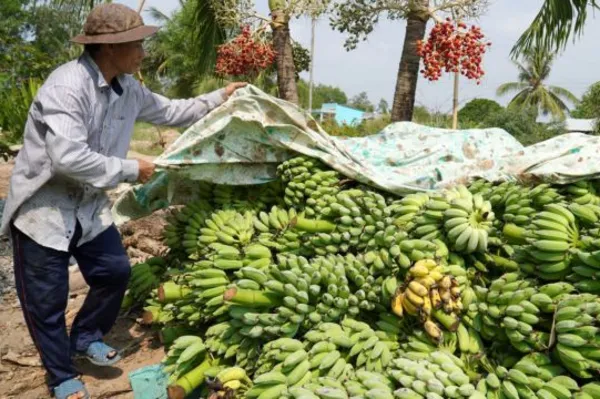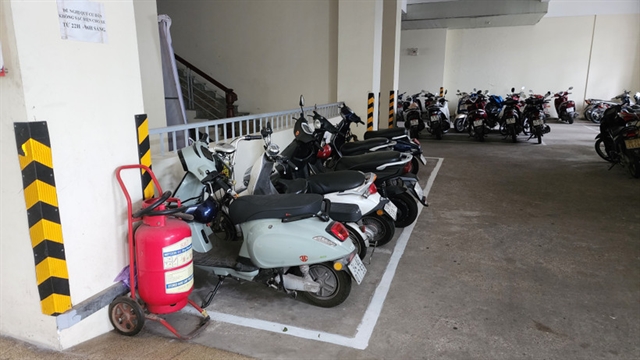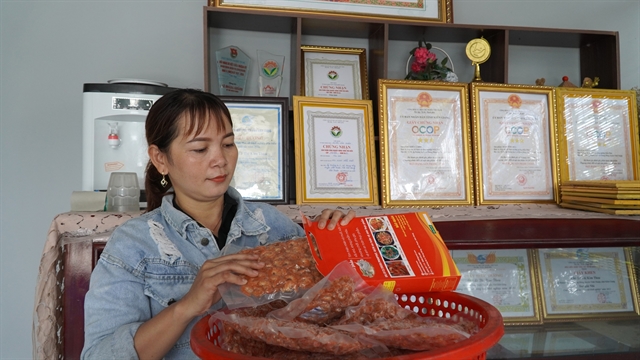 Society
Society

 |
| Dried shrimp produced by the Hiểu Phát Agricultural Co-operative in Kiên Giang Province’s Vĩnh Thuận District. — VNA/VNS Photo Văn Sĩ |
KIÊN GIANG — Agricultural co-operatives in Kiên Giang Province have developed rapidly in terms of both numbers and efficiency.
The Cửu Long (Mekong) Delta province now has more than 470 agricultural co-operatives and 1,500 agricultural co-operative groups with a total membership exceeding 70,000.
The adoption of modern co-operative models, which integrate input supply with output linkage for agricultural products, has significantly improved farmers' profits and co-operative performance.
The Phú Hòa Youth Agricultural Service Co-operative in Tân Hiệp District’s Tân Hội Commune has more than 320 members with nearly 700ha of rice fields.
By adopting modern farming techniques, the co-operative has achieved high profits, particularly over the last five years.
Nguyễn Văn Huỳnh, its director, said in the past members did not grow an autumn-winter rice crop and only grew in winter-spring and summer-autumn due to uneven field surfaces.
“Since 2018 the co-operative has used machinery to level the fields, enabling its members to cultivate three high-quality rice crops per year.
“The co-operative provides them with fertilisers, pesticides and irrigation services at prices around 10 per cent lower than the market rate, helping them increase profits by more than VNĐ3 million (US$120) per hectare per crop.”
Hồ Văn Hướng, a member of the co-operative, recently harvested the 2024-25 winter-spring rice on his two hectare field, achieving a yield of 9.5 tonnes per hectare and earning VNĐ110 million ($4,300) from selling the paddy.
By being part of the co-operative, he benefits from synchronised sowing with other members, centralised irrigation, stable demand, and getting rice prices that are VNĐ200-300 per kilogramme higher than market rates, he said.
“Climate change has affected rice farming, and the market has fluctuated in recent years. Joining a co-operative for systematic, high-quality rice production with secured input and output channels is now essential for stable rice farming.”
The Vinacam Hòn Đất Agricultural Co-operative in Hòn Đất District’s Nam Thái Sơn Commune cultivates 700ha of rice and has transitioned from traditional to modern farming methods.
It employs drone-assisted pesticide spraying, smart irrigation monitoring and mechanised rice sowing to optimise productivity.
Lê Tấn Đức, its director, said the co-operative’s headquarters serve as a venue for transactions and meetings. Its rice fields are protected by a closed dyke system and advanced irrigation infrastructure that regulates water levels and drains excess floodwater.
“The co-operative now has more than 70 members. To safeguard their benefits, we collaborate with rice companies to provide inputs such as seeds, fertilisers and pesticides, and to sell rice at the end of each harvest.”
The co-operative's annual revenues exceed VNĐ120 billion ($4.7 million), while profits are over VNĐ450 million ($17,500), he said.
Lê Minh Khem, a member of the co-operative and owned of a six-hectare farm, took part in growing high-quality and low-emission rice on a trial basis on 5,000sq.m in the 2024-25 winter-spring crop.
The trial achieved a yield of 9.7 tonnes per hectare, matching traditional methods but generating extra profits of VNĐ4 million ($160) per hectare due to reduced fertiliser and pesticide use.
“The co-operative’s large-scale production model already offers great benefits. Now, with this high-quality, low-emission rice farming method, farmers can further cut costs, minimise health risks and sell rice at a premium of VNĐ300 per kg,” Khem said.
Under the Ministry of Agriculture and Environment’s project to develop one million hectares of high-quality, low-emission rice cultivation linked to green growth in the Mekong Delta by 2030, Kiên Giang aims to account for 200,000ha.
Its agricultural co-operatives have operated efficiently, helping increase farmers’ incomes, according to Phạm Thành Trăm, deputy chairman of the Kiên Giang Co-operative Alliance.
But some do operate inefficiently because their members are small farming households with limited production capacity, he said.
Besides, the agricultural sector faces risks due to climate change and price fluctuations, he said.
To enhance their efficiency, co-operatives, especially small and medium-sized ones, should be offered financial, technical and management support, he said.
Authorities should invest more in rural infrastructure, including irrigation, roads and electricity for irrigation, and in machinery, technology and training members for co-operatives, he said.
Co-operatives should establish linkages with reputed companies to facilitate sales by their members, he added.
Kiên Giang, the country’s largest rice producer, grows 4.5 million tonnes of paddy annually, according to its Department of Agriculture and Environment.
Last year it had large-scale rice fields covering 50,000ha with more than 38,000ha cultivated under farming contracts.
Of the 38,000ha, more than 27,000ha meet SRP, organic and Vietnamese and global good agricultural practice standards and their output is exported to the EU, the US, and Japan. — VNS




